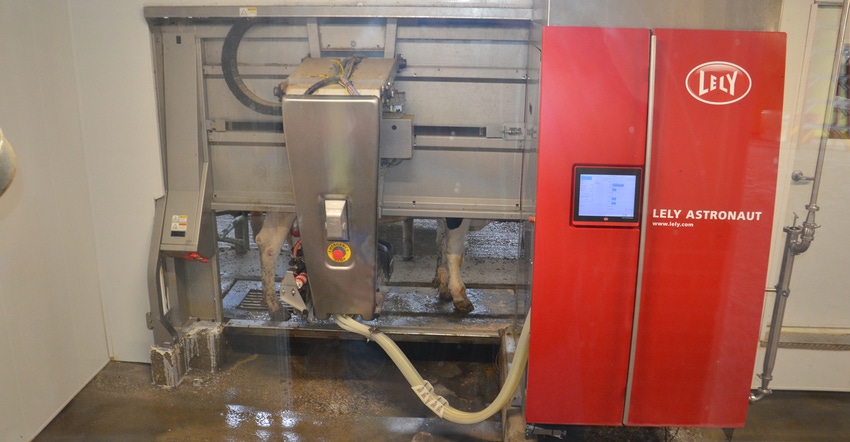
Nearly a decade ago, the Koester family, Poseyville, Ind., was looking for a way to reduce time spent in the milking parlor. The multigenerational family raises crops and hay and has a trucking business in addition to the dairy. Four brothers — Dale, Jim, Ray and Duane — are now welcoming the next generation, starting with Ray’s sons Sam and Luke, plus more in their generation who already are involved on the farm.
“We were just spending too much time in the parlor,” Ray recalls. They heard about robotic milkers, a fairly recent development in the U.S. at the time, and investigated. They installed four robotic milkers in 2012.
“Today we have 220 cows and could probably use that fifth robot,” Sam says. “We will soon have to get serious about where we are going with the dairy in the future.”
Robotic milking benefits
In the meantime, the Koesters look back on how the robots have proved useful. The big drawback was the large initial investment, but they say the benefits are numerous:
Frees up labor. “We don’t have to send two to three people off to milk in the late afternoon during busy planting and harvest seasons,” Sam says. “That’s a huge plus when you’re relying on family labor.
“Someone still has to put in the time checking on records and cows, but it may be late at night once you’re out of the field.”
Improves efficiency. Before, they milked cows twice per day, Ray says. Now, the cows are milked an average of 2.8 times per day. Each cow chooses when to go into the robotic stall to milk. Cows are fed in the stalls, which is their incentive to be milked.
They really see the increase in July through October, which used to be lower months for milk production, Ray notes. They’ve been able to improve reproductive efficiency using data gained through the computer system connected to the robotic milker, and freshening is now spread more evenly throughout the year.
Identifies sick cows sooner. Since each cow has an individual transponder to trigger feeding and milking, the Koesters also get more information on each individual cow. “We can now treat cows as individuals,” Ray says.
One benefit is to detect when cows are sick sooner, whether it’s a cow not eating up to her normal amount or one with a higher temperature. They note that paying more attention to individual cows is an important way to improve herd health.
Improves milk quality. Since switching to robotic milkers, somatic cell counts have generally declined, Sam says. These cell counts are an indication of cow health. If cows are headed toward problems with mastitis, the somatic cell count in the milk tends to rise.
Gathers more data. The farm now has tons of data since information is collected on each cow. “More data is good,” Sam says. “The challenge is how to interpret all of it. Using it to find sick animals is an easy and important way to make the data work for you. We’re still working on other ways in which we can use all the data we collect to make improvements.”
About the Author(s)
You May Also Like




